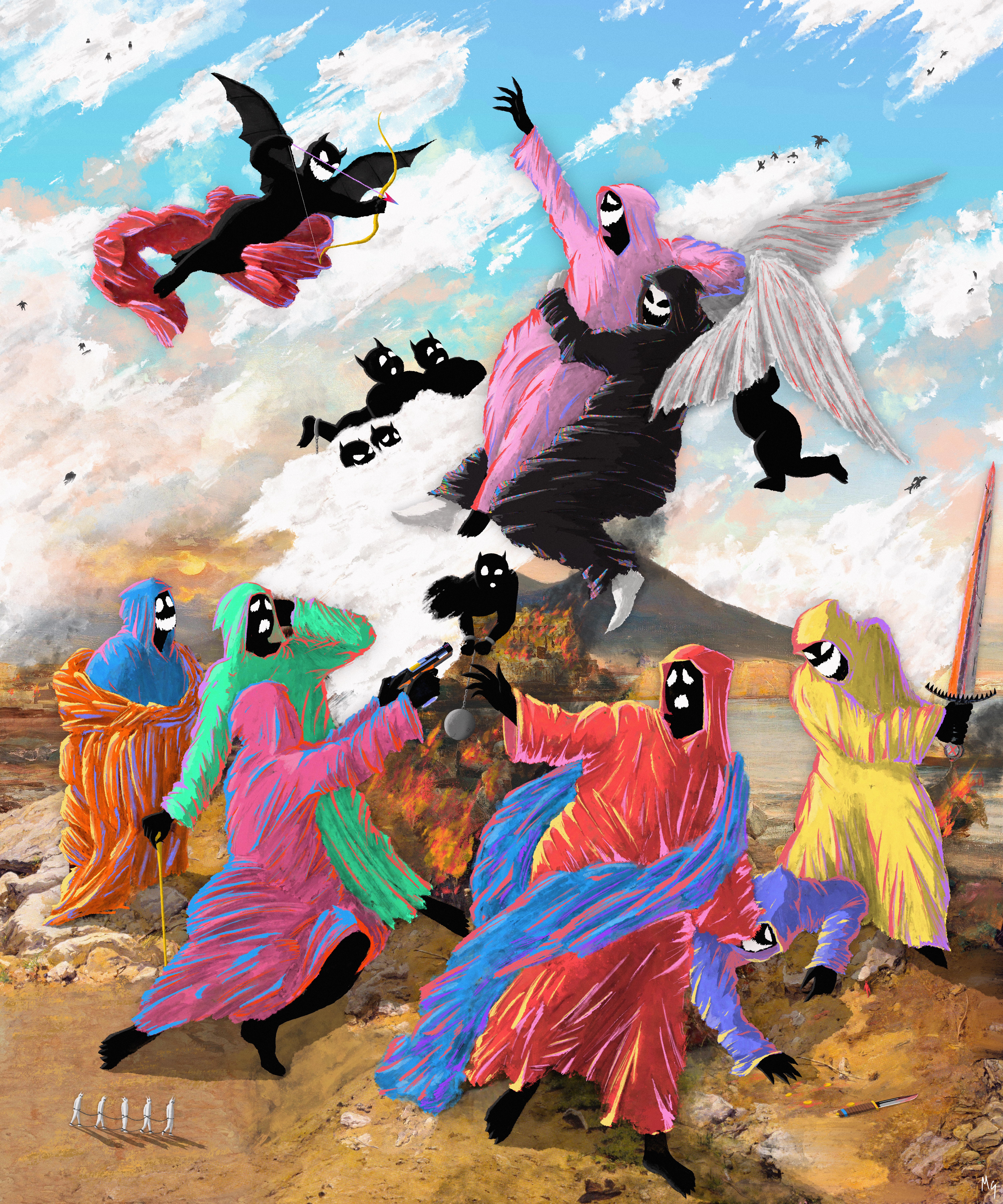IMN #24 — Other World

It's Monday Night #24
Let’s share thoughts about @otherworld_xx’s work: they say history repeats itself: first as tragedy, then as farce. No, history does not repeat itself, says @otherworld_xx, it's a perpetual tragic farce.
But let me elaborate.
The digital paintings of @otherworld_xx are apocalyptic. Nevertheless, they do not show the arrival of the end of the world - as in Hollywood movies: the spectacular catastrophe that looks like an amusement park - but the eternal catastrophic present that all existence faces.
Apocalypse is not what comes afterwards, at the last moment - the disaster that we don't want to believe in and that nevertheless erupts.
Apocalypse is what is already here and what keeps on happening every second.
It's not the end of the story, it is what must be deciphered in human history: the assumption that evil, death and suffering can have meaning, the possibility of redemption or salvation.
It is a theological concept, involving our understanding of the divine and how it addresses us: by enigmatic and foggy messages, by cruel commands and dubious jokes.
If @otherworld_xx's digital painting is apocalyptic, it is in the etymological sense: the apocalypse is a revelation and each of their pieces functions as a pictorial revelation.
In the visual language of @otherworld_xx, it becomes a nightmarish and hilarious vision. Let's look at the paintings in a little more detail.
The scenes depicted contain great dramatic intensity, they are also of obvious cruelty.
All the characters are anonymous, they appear as the ambiguous evocation of a Greek-Christian mythology: by the clothing, the attitudes and the situations that could belong as well to the Trojan war as to the New Testament.
The Greek dimension of their style appears mainly in the use of grimacing faces that immediately recall the masks of ancient tragedy.
Mask is at the same time what conceals - since it covers the features of the face - and what reveals an interior truth - not by saying it, but by manifesting it through acting and dancing. @otherworld_xx's mask is the truth made face and this face is frightening and grimacing.
From the Greek tragic theater, the painting of @otherworld_xx has not only the masks or the architecture of the temples, but also the joyful ferocity of the gods who play with human destinies.
Human fate is, from the point of view of the gods, something that is played with dice or cards, on a silly bet or an irrational whim.
As in an Aeschylus tragedy, the chorus is a character - a collective character - in its own right, like a fragment of a non-heroic humanity.
The painting of @otherworld_xx brings us into contact with the unjust and unjustified nature of fate - but here the gods are all alike, they are not what condemns to death but death itself, as a threat and as a feast.
The Christian dimension of @otherworld_xx's painting is, in my opinion, even more powerful. The deserted landscapes, the tunics, the parabolic - but enigmatic - character of each episode represented, immerse us in a biblical universe.
There are only collective scenes in @otherworld_xx's painting, scenes of violence, riot, conspiracy, destruction, murder and lamentation: the artist stages a real scenography of vice.
In their work, the allegorical force of the Gospels (as they have been depicted in the history of Western Christian painting) undergoes a distortion or twist that suspends their spiritual meaning.
In the collection, you can see Leonardo da Vinci, Caravaggio or Jacques Louis David parade by and, if you listen carefully, you can hear how @otherworld_xx manages to make these canonical paintings snigger.
The Last Supper, for example, or The Calling of St Matthew, which @otherworld_xx translates into its own visual grammar, extreme colorfulness, a baroque composition and a great simplism of forms that, in a sense, is close to the comic strip.
Each of the paintings in @otherworld_xx embodies the insolent desecration of a forgotten ritual.
A baptism, a vocation, a prophecy, a funeral ceremony, all the gestures by which human beings relate to the sacred are reenacted in a parodic form: objects are substituted for one another (so that certain contemporary signifiers can break through).
The spear is transformed into a pistol, a heap of moneys into a little man in distress, the smile into a sneer, and so on.
Hence this strange impression, in front of the paintings of @otherworld_xx, that something has been profaned, that a kind of blasphemy or heresy is somehow incarnated before our eyes.
Death is present everywhere but there is nothing morbid in @otherworld_xx's style: on the contrary, everything is alive, innervated by a rhythm and by a proper pulsation.
Like the carnivals of the Middle Ages: the world is turned upside down, social relationships are transformed, the whole society becomes a kind of human comedy.
The irreverent part of his painting is in fact a malice that allows him to show evil, pain, earthly misfortunes from the amoral and ironic point of view of a god without compassion.
In a world absolutely left to chance, hope is not allowed, but neither is despair - the semantic games on the titles of his works indicate this well enough.
The painting of @otherworld_xx digs another reality inside our reality - in a world cut off from any transcendence, he makes a divine that has become a gargoyle resurface and appear.
The great narrative machines (Christianity, Greek tragedy) of the past are not only "hijacked", but brought back to life.
The act of piracy that is at the foundation of his painting is also a way of awakening and reorienting the old narratives that have structured our understanding of history for more than two thousand years.